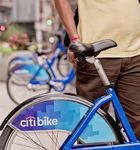2025 Scenario 2 Everything is an experience - DS Smith
←
→
Page content transcription
If your browser does not render page correctly, please read the page content below
Scenario 2
Scenario 2
Everything is an experience
By 2025 the role of bricks and mortar retail changes out of all recognition. Brand-
ed experiences take over our shopping areas and malls, becoming exciting and
theatrical social events. Global brands face stiff competition from small startups
that are more meaningful to consumers. Every brand has to do more than tell a
story – it has to be able to prove that the stories it tells are true.
2016: How it begins 2018: Microbrands begin 2019: The sharing economy
to overtake global brands’ transforms the consumer
The barriers to entry in many FMCG market share durables market
categories are falling. OEM factories
are increasingly able to produce small In this scenario, by 2019 microbreweries Consumers start buying fewer durable
runs of products; consumers have a are selling more beer than all the big goods and renting more. Apps make it
growing appetite for small brands with players put together. Cheese and convenient to rent goods by the hour
an interesting story or a charismatic chocolate are set to follow, with local or day. A generation who’ve grown up
founder. Distribution can be handled artisan brands becoming firm favourites. with AirBnB and Zipcar take naturally
online; viral marketing doesn’t need big Consumers become more educated to the idea that they can rent a tool, or
media spend. about provenance, and they want it to can monetise something they own like a
be as authentic for a bottle of shampoo power hose or tent.
Microbrands are already threatening as it is for a bottle of wine. This means
global players in certain aisles of the that sources of ingredients have to Big brands get in on the act, turning their
supermarket. Craft beer now accounts be verifiable. products into services: in 2020, Bosch
for 21% of the US retail market. The US rents more power tools than it sells. If
artisan chocolate market is currently Brands that claim to be local have to you need a hole in your wall, you can just
worth $100m per annum, and is prove it. Scandals emerge over chocolate order a drill. For a small price, it will come
estimated to be growing at over 8% a manufacturers that claim to be ‘bean to with a DIY expert. As products were
year. Packaging is critical for these small bar’ but actually buy it pre-made from loaned and re-loaned, the packaging
brands. In many instances, it’s the only third parties. becomes more important. It must ensure
publicity they get. everything arrives and is returned in
Throughout the supply chain, packaging perfect condition, day after day.
becomes smart and traceable; anybody
who wishes to check where the beans
in their bar came from can just scan
the wrapper.Scenario 2
2020: P&G CEO announces it is 2021: Instore spend
a lifestyle services company tops adspend
Big manufacturers fight back against Many global brands aim to add services This is the first year that Unilever spends
the small brands. They customise to their products. Reacting to the more on marketing in stores than it does
products on a colossal scale. Levi’s stores astonishing success of Unilever’s on television and online advertising put
stop selling clothing. Instead, they Dollar Shave Club, P&G makes its razors together. Supermarkets and shopping
became places where customers are available only by subscription. It also malls became theatres for brands. Global
measured for clothing that will then be opens 300 grooming academies giants take on the small upstarts with
automatically tailored and delivered. across the US to teach men how to everything they have.
Levi’s aims to be custom-tailoring every look their best, and online concierge
pair of jeans sold in the US by 2025. services spring up for every segment Word of mouth becomes the critical way
of the population. to sell; people trust recommendations
from friends or even strangers far more
than a TV commercial. As advertising
stops working, ad agencies evolve. The
smartest talent no longer creates 30
second TV spots. Now it’s employed
creating in-store theatre that gives
consumers unique experiences.
Shopping gets more social. As shops
become more entertaining, consumers
flock there, not to buy, but to enjoy
experiences together. Retailers have
responded with crèches, games, live
entertainment and cafes.
In the past, packaging told us about the
features of a product and television
made it glamorous. Now packaging
has to do the whole job; it’s part of the
theatre, part of the storytelling of brands.
The materials became part of that story:
where they were sourced, how they
could be recycled, reused or upcycled.Scenario 2 Everything is an experience For more information and to see the accompanying film visit: www.dssmith.com/consumerexperience-scenario
You can also read
























































